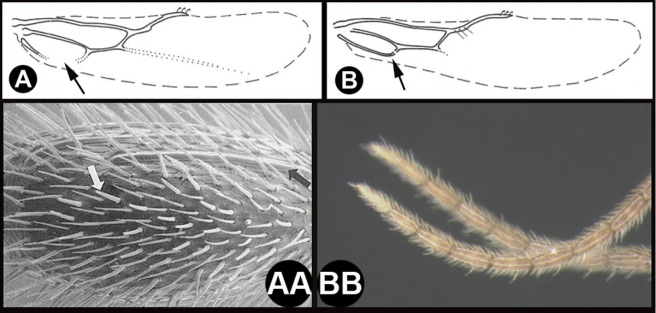| 1 | A. Venation reduced, forewing RS not reaching wing margin; widespread | 2 |
| – | B. Venation complete, or nearly so, forewing RS reaching wing margin; Nearctic | 4 |

| ||
| 2(1) | A. Apical flagellomere narrower with a sharper apex. AA. Ovipositor longer, longer than first metasomal tergite; Neotropical | Lispixys |
| – | B. Apical flagellomere thicker, with a blunt apex. BB. Ovipositor shorter, barely exerted; widespread | 3 |

| ||
| 3(2) | A. Hind wing 1A incomplete, clearly separated from cu-a. AA. Apical flagellomeres of female with a pair of ventral placodes widely separated; widespread | Paroligoneurus |
| – | B. Hind wing 1A complete, meeting or nearly meeting cu-a. BB. Apical flagellomeres of female with evenly spaced placodes; widespread | Oligoneurus |

| ||
| 4(1) | A. Apical abscissa of forewing RS curved towards parastigma; crossvein r emanating near midlength of parastigma; crossvein 2cu-a absent or barely indicated leaving the subdiscal cell open; Canada, first record for the New World, rare | Pseudichneutes |
| – | B. Apical abscissa of forewing RS straight or curved towards apex of wing; crossvein r emanating basal to midlength of parastigma; crossvein 2cu-a long and distinct, closing the first subdiscal cell; Nearctic, common | Ichneutes |

| ||

An official website of the United States government
Here's how you know
Official websites use .gov
A
.gov website belongs to an official
government organization in the United States.
Secure .gov websites use HTTPS
A lock (
) or https:// means you've safely
connected to the .gov website. Share sensitive
information only on official, secure websites.